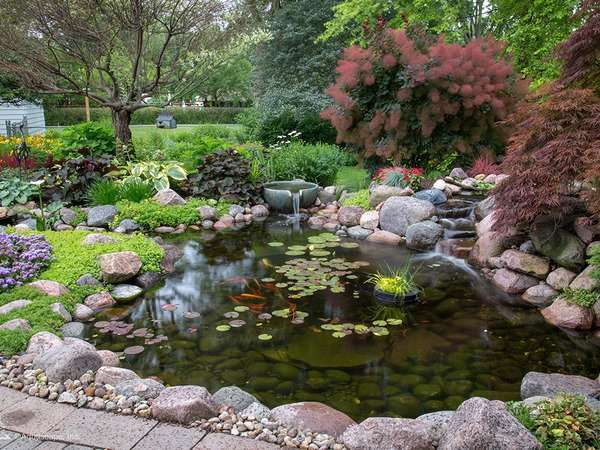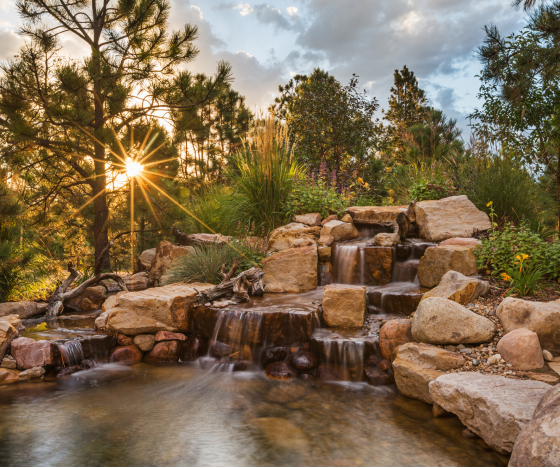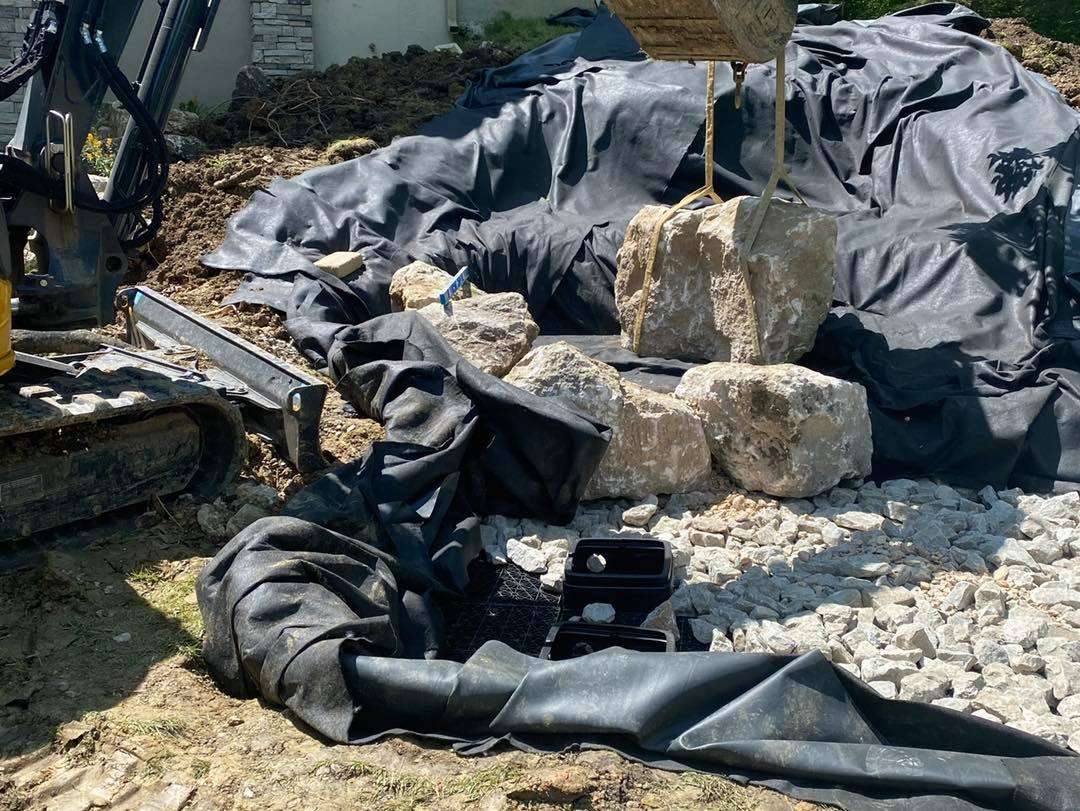There Are Many Ways You Can Minimize Algae To Better Enjoy The Pond In Your Kansas City, Missouri Home

Thank you for looking up how to take care of your pond! As professional pond contractors, we appreciate it when people take care of their pond ecosystem.
In this post, you’ll find out how to treat and control algae in your pond. You’ll also find out what causes algae to flourish, if koi fish eat algae, and what products can control algae.
It’s Like A Nasty Crayon Color
“Like if Crayola came out with a box of nasty colored crayons?” asks Jennifer.
Michael sighs and nods. “Yep, exactly like that. We need to find out how to treat algae in a pond. Then we need to know how to control algae in a pond.”
“Then we can have our clear, beautiful pond back!” says Jennifer excitedly. “And keep it that way,” finishes Michael. “But first, we need to see how we can get it there. Maybe we can look up how to clean a pond?”
Jennifer picks her phone up off the kitchen counter. “Our pond contractor has a blog on his website, let’s see if we can find the answer on there.” She starts searching his website.
“Here we go! There’s a blog post about algae control, perfect.” Michael walks over so he can read the post too.
Here’s what the couple finds out:
What Can Cause Algae To Form In Ponds
- Something in the filters or pumps may not be working
- You may have too many fish creating waste for your filters
- Too much debris is breaking down in your pond, which feeds algae
- You don’t have enough filters, which allows excess nutrients to gather
- There isn’t enough aeration, which oxygenates the water
- Your pond gets too much sunlight, encouraging algae growth
How To Treat Algae In A Pond
To treat algae in a pond, the first step is to troubleshoot your pond. It could be that something isn’t working right, allowing algae to grow. You can use algae treatments, put living filters in your pond, install more mechanical filters, and add rocks and gravel.
1. Troubleshooting Your Pond
When something seems off with your pond it’s likely that something isn’t working correctly.
Filters might need checking, pumps might not be working too well, a part of your pond is letting rainwater runoff in, or it just might need a cleaning.
Troubleshooting a pond is tough. You’re on your hands and knees, moving rocks and dirt around, bending over, and it’s all outside. Most people hire someone to do this for them because it’s tiring and takes a practiced eye.
2. Using Algae Treatments
You can always skip the organic treatments and go right to chemicals.
There are ones safe for animals and plants (we highly recommend this). They’re great for getting rid of algae, but not solving the cause. They bind algae together for easier removal.
AlgaeFix, Greenclean, and Sludge Remover Bacteria are 3 good choices.
3. Getting Living Filters

These include fish, plants, and beneficial bacteria.
Koi like eating algae, it’s like a snack for them. They also add fun energy to your pond and you can feed them! Be aware, if your filter can’t handle the amount of waste they create algae can start growing too fast.
Plants eat the nutrients algae use to grow. They can also aerate the water, block sunlight, and beautify your pond.
Beneficial bacteria live in biofalls filters and on rocks and gravel. They take up nutrients in the water that algae feed on. They also eat muck and debris.
4. More Mechanical Filters
You may be more familiar with the term skimmer.
The water pushes leaves, sticks, and other debris into these skimmers. This makes it easy for you to clean debris out of your pond. It helps your pond look cleaner and clearer for longer.
5. Adding Rocks And Gravel

Rocks and gravel do more than beautify the bottom and sides of your pond. They also give a home to colonies of beneficial bacteria, which clean your pond.
You May Also Like To Know
“Which do you think we should do first?” asks Michael. “Let’s start with the algae treatment first. If it comes back we can explore the other options,” suggests Jennifer. “Until then, let’s see what else this blog has for us.”



